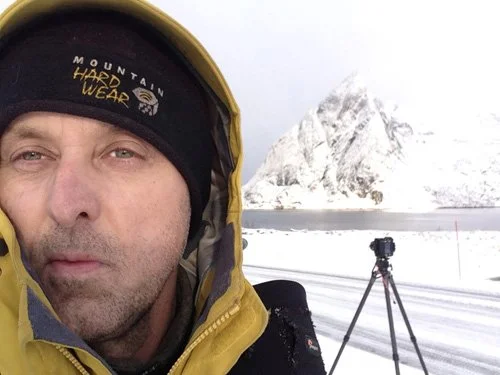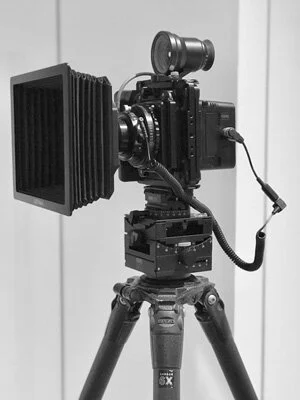Guy Havell Gallery
ABOUT
I'm a former (AIPP) Australian Institute of Professional Photography accredited Master Photographer specialising mostly in Fine Art Landscape, Documentary Landscape and Built Environment Photography utilising both digital and analog platforms. I typically work alone with my own ideas and thoughts to slowly produce images in the traditional method preferably with a single exposure and minimal post-production in order to maintain the reality, pay respect to, and, in most cases, accurately represent the original scene. I will however, on occasion, allow myself some artistic license but I’d describe myself as a traditional photographer, not a so called “digital artist” or “content creator”, and I'm interested in creativity, diversity and personal expression within the realms of reality. In recent years I've taken the conscious decision to evolve my photography away from the popular mainstream visual aesthetic by adopting a somewhat contrarian approach and attitude. My preference and objective is to photograph ordinary and often mundane subject matter that I find interesting and thought provoking, preferably far removed from civilisation in unpopular, unspectacular and remote locations. I simply have no desire to do what everyone else is doing or have my evolution and creativity as a photographer constrained by modern photography’s incessant and relentless, social media motivated, creativity killing popularity trap. (See Below “Social Media”) As a landscape photographer, it is my responsibility and duty to be diverse and open minded and photograph ALL environments, regardless of whether they are good or bad, pretty or ugly, popular or unpopular. My images are unapologetically a self expressive representation of how I see and interpret natural and built environments, and consequently often not an idyllic portrayal or a preferred representation of how a mainstream audience would prefer to see them.
The New Topographics - A rebellion against the romantic depictions of the landscape.
My interest is in the “New Topographic’s“ style of photography pioneered in the seventies by a group of 10 photographers who weren’t particularly interested in what everyone else was photographing, and took it upon themselves to actively defy the conventions of traditional romantic, sublime, pretty picture landscape photography to do their own thing with their own individual styles. Unlike modern day photographers, these artists weren’t motivated by popularity, trends or replication often going against convention photographing common and banal subjects of stark industrial landscape, suburban sprawl and urban desolation in the pursuit of a more novel form of objectivity. In fact when the New Topographics exhibition first opened in 1975 it was not well received by the public who were so used to the romanticism and artistic beauty depicted in nature photography by the likes of Ansel Adams and Edward Weston that many wondered why anyone would want to photograph such “boring“ subject matter. Over time though, the general public warmed to this radical shift from the traditional glorified depictions of the landscape and gradually opened their minds to the fact that not all landscapes are idyllic and beautiful, and nor should they always need to be depicted as such in photography. There was no idyllic image of nature in the New Topographics work, but simply a plain unemotional documentation of the way man has altered it.
For me personally, there’s a lot to like about the New Topographics style but I especially love how it basically gives the middle finger to popularity and mainstream photography styles and just documents straight, mostly man made built environments without, in most cases, having actual humans detracting and distracting from the main subject matter of the composition. The ordinary world has a story to tell if the viewer is prepared to look deeper into the photo, instead of incessantly scrolling in search of satisfying visual aesthetics.
New Topographic’s photographer Frank Gohlke once said in an interview that “I'm more interested in the effect that people have on land, and how land affects our sense of our place in the world. When I do include people, they're small and they're only in the picture because they were in the right place at the right time.” It’s also interesting to note that although Gohlke respected the work of Ansel Adams he didn't feel as though his vision of nature's grandeur was something he could believe in. Gohlke’s objective was for people to get pleasure out of his images and “come away with a larger sense of what's worth paying attention to”. “I want to convey a sense of how rich the ordinary world is.”
Social Media - The creativity killing popularity trap
Not everyone is into social media and as a private person and an introvert I find it an invasion of privacy, mentally draining and sometimes quite annoying to be honest. I do however acknowledge that sometimes it can provide useful, helpful information to others. I prefer to live my life and evolve my photography in a PRIVATE manner by minding my own business which could be considered strange in today’s narcissistic, privacy invading, attention seeking social media world. As primarily a landscape and built environment photographer, I use social media because it's a necessary evil in order to get some exposure but I will never try to mislead the viewer, stage images or make a landscape image all about me in the desperate search to be "liked”. These so called "influencers" or Instagrammers who break the law, risk their lives, disrespect other travellers and vandalise sensitive areas all to show off or promote themselves or products I have no respect for. The fact that people are losing their lives trying to satisfy their insecurities in the never ending quest for popularity and validation is sad and pathetic.
I prefer to admire the work of genuine people and genuine creatives that produce original, meaningful, thought provoking imagery without having to rely heavily on post production and if they do, they are open and transparent to the public and their clients with their disclosure. It's called ethics. I also gain inspiration from the quiet achievers in the photography and artistic world with low followings many of whom consistantly produce outstanding work far superior to almost anything else out there both technically and creatively but don't care to seek the limelight and just go about their craft in a quiet and respectful fashion with lots of passion. I admire the photographers that are always trying new things by taking artistic risks and not worried about protecting their social media profile. I admire the photographers that push the limits with their own ideas and not just copy others. I admire the photographers that work long and hard in the field in tough conditions to make new unseen images, and if they don't work out, they go back relentlessly until they do. I admire the photographers that aren't at all influenced by social media trends, don't sook about “low engagement”, respect the law and the environment and just get on with it. Because contrary to what manipulative, brainwashing social media may have you believe, a photograph does not have to be beautiful, “likeable”, or conform in any way whatsoever to what a mass audience deems as “popular”. In fact, in an age of social media where narcissism, replication, unoriginality, and cliche abound, I’d personally prefer that it didn’t conform at all.. In the real world, “likes” mean nothing. I personally prefer to be an individual, not a sheep.
INSTAGRAM - (guy_havell)
Gear -
If you aren’t interested in gear, then don’t read this!. Simple!
I want to maintain and pay due respect to the manual traditional photography process of taking “a photo” (singular) so consequently I have chosen to use cameras with no automation whatsoever for most of my photographic life. I consequently rarely change cameras or suffer from (GAS) “Gear Acquisition Syndrome”. I’m not particularly interested in “ease of use” automated equipment, dynamic range or megapixel camera company marketing spin, or the latest and greatest technology, I simply want a camera that is suitable for the subject matter I choose to shoot, and that best allows me to get the photograph as technically right as possible “in camera” using the camera’s rise/fall/tilt capability, rather than just adopt the unhealthy “I’ll just fix it in photoshop” mentality. It is also important for me to have a camera with the modular capability to use a film or digital back off the one body with the same lenses at a moments notice, depending on my artistic intent at the time. Consequently, I have chosen to use the ALPA + Phase One technical camera setup below since 2012.
*Phase One IQ260 medium format digital back
*Linhof Super Rollex medium format 6x9 film back
*Rodenstock/ALPA HR Alpagon f5.6/23mm LB Copal 0
*Rodenstock/ALPA HR Alpagon f4.0/40mm SB17 Copal 0
*Rodenstock/ALPA HR Alpagon f5.6/70mm SB17 Copal 0
*Schneider/ALPA Apo-Helvetar f5.6/120mm Aspheric SB34 Copal 0
*Gitzo 3532L Systematic Tripod
*Gitzo 3541 Systematic Tripod
*Arca - Swiss C1 Cube geared head + Fliplock
*ALPA / Linhof 3D Micro geared head
*Fotoman 6x17 medium format panoramic film camera
+ Schneider Super-Angulon f5.6/90mm lens
*Fuji X-Pro 1+ 35mm
*Canon 5D2 + Lenses
++ accessories too numerous to list









